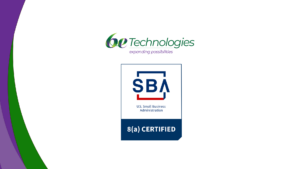Automation has existed for over a decade but has seen exponential growth with recent advances. The advances have seen significant change as there has been an increase in automation tools that replicate and automate transactional processes while improving process accuracy and speed. RPA offers the untapped potential of removing human bias and providing valuable insights that have further catapulted digital transformation. We can define automation maturity level as the extent of RPA used in the public sector, based on using data effectively to deliver citizen services while transforming and managing operational workflows. The public sector can increase this capacity and tackle its tactical priorities by using new innovative solutions such as AI, machine learning, and the Internet of Things.
Automation and Cognitive Technologies Aren’t Magic Bullets — But They Can Take You a Long Way.
The public sector has been growing, with organizations and service delivery adopting automation technologies to improve efficiency, respond to increased demands and maximize resources. However, before we jump on this bandwagon and start using automating agencies, there are a few things you need to know about automation. Artificial intelligence and RPA are essential in the public sector, how they can be used by small and large agencies alike, and why your federal agency won’t be left behind if you choose an adaptive approach.
Government Agencies Are on the Cusp of Major Transformation — Many Won’t Realize It.
We’re in a unique moment in time for public sector organizations. Government agencies are facing an aging workforce, budget reductions, new expectations from citizens, and new standards for efficiency and transparency. In recent times, technology has been touted as THE ANSWER. The popularity and use of digital tools rapidly find inroads into governments and governance worldwide. It develops operations with a series of “if/then” decision-making that handles tasks based on those guidelines, ultimately freeing up staff to focus on activities of higher value. The rapid growth of technology and AI will be a game changer and define the future of government agencies’ operations. It will also create incredible opportunities for people who work in these organizations. The good news is that there are plenty of examples where RPA has already transformed businesses and agencies; for example, The U.S. Postal Service automated 80 percent of the supplier request with RPA. The bots now run one hour daily, five days a week, processing 375 transactions with 100% accuracy.
Government and public sector organizations can leverage automation for the following activities:
- Data digitization: By converting physical data into digital data, agencies can provide services that fulfill citizens’ expectations.
- Data migration: Can help governments run crucial administrative processes across from a centralized locus, thereby enhancing data-driven processes and eliminating errors
- Communication with the public: Enhanced communication channels can help in information dissemination to citizens, peer-to-peer sharing of data, and co-creation of solutions
- Public opinion analysis: Automatically extract relevant information and help analysts derive actionable insights.
- Healthcare management: Manage public records of healthcare and vaccination information, communicate with citizens about healthcare updates, and generate timely reports for Government action during health crises.
- Public security: The security can enable the safe storage of citizens’ sensitive data, such as their Social security numbers, license numbers, tax IDs, and other sensitive information behind layers of security.
The Path Forward for Public Sector RPA and Intelligent Automation Is Governed by Rules, Processes, Data, and Analytics, All together!
Automation, leveraging artificial intelligence (AI) and other technologies, has opened up new possibilities. In the real world, people working with technology can deliver the most outstanding value if the automation aligns with their vision and purpose. A clear strategy and implementation plan can effectively manage digital transformation. Not to forget, this will bring datasets together and insights that would not previously have been possible. So rules, processes, data, analytics, and good governance can get relevant, significant, and proportionate changes.
We believe intelligent automation will change everything about the public sector, radically rethink how these agencies deliver services to the public and find newer ways to tackle national, regional, and local issues.
Source:
“RPA Streamlines Payments, Powers Efficiency.” Cognizant https://www.cognizant.com/us/en/case-studies/postal-service-robotic-process-automation






